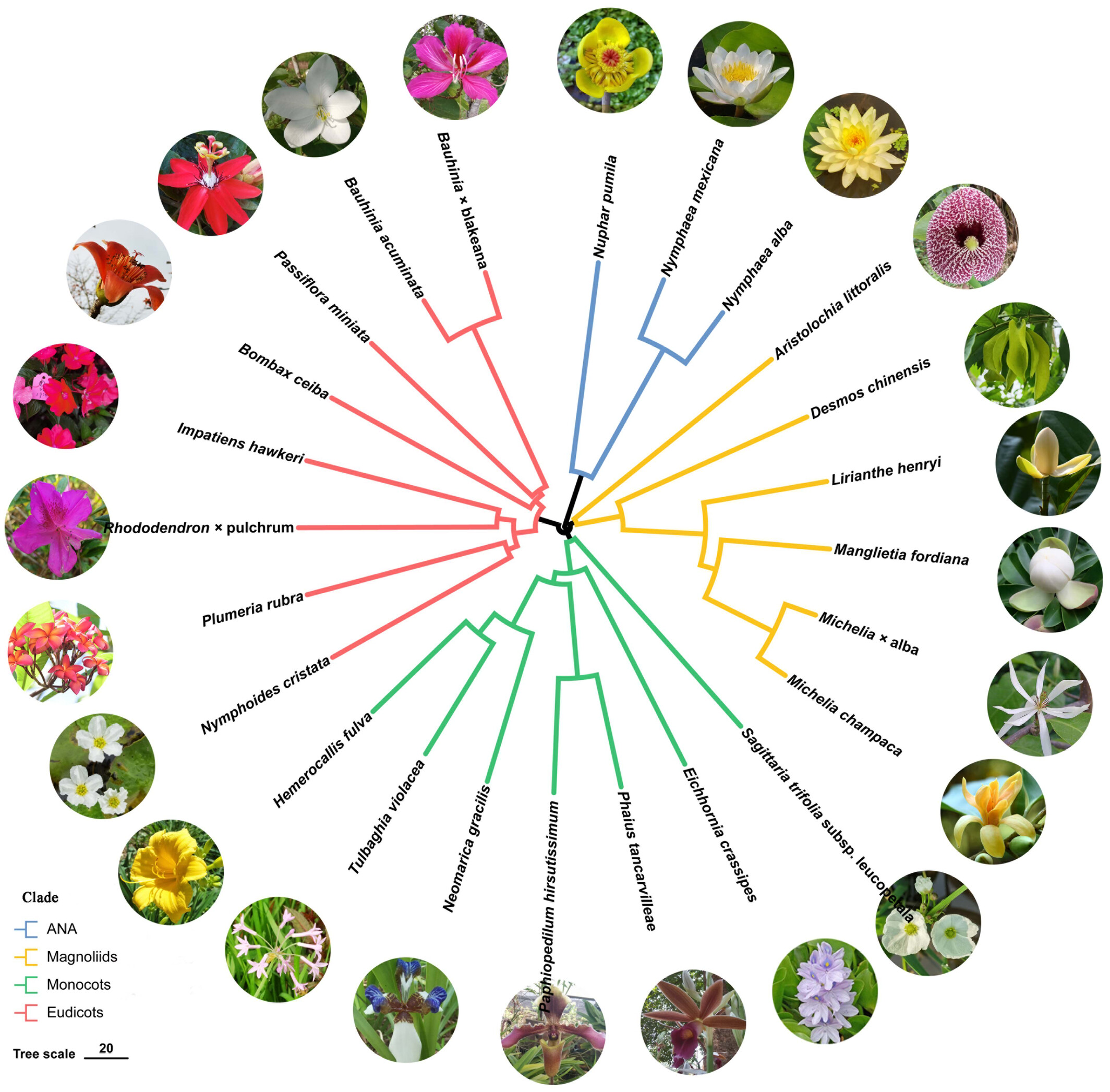Flowers play an essential role in maintaining a species genetic stability. Understanding how flowers regulate water-use strategies to adapt to their environments is crucial for better understanding floral evolution and plant–pollinator–environment interactions. However, the mechanisms by which flowers maintain water balance are poorly understood across different angiosperm branches.
In a study published in Plant Biology, researchers from Xishuangbanna Tropical Botanical Garden (XTBG) investigated the differences in flower water use strategies between basal angiosperms and derived groups (monocots and dicots). They measured 29 floral traits related to water transport, storage, and loss of 24 species from the ANA [Amborellales (A), Nymphaeales (N), Austroballeyales (A)] grade, magnoliids, monocots and eudicots.
The researchers found that there are strong relationships between flower hydraulic structure and function, but this relationship differs between basal angiosperms and monocots/eudicots. Basal angiosperms displayed floral trait values associated with higher water and carbon costs, such as petal stomatal density, stomatal pore area index, pedicel hydraulic diameter, maximum vessel diameter, and theoretical hydraulic conductivity . Conversely, monocots and eudicots had higher values for traits linked with lower carbon costs, with higher values for traits like petal epidermal cell size, petal adaxial epidermis thickness, and pedicel vessel wall reinforcement.
Furthermore, there were significant differences in the coordination and trade-offs among floral traits in basal angiosperms, monocots and eudicots. The correlation between pedicel theoretical hydraulic conductivity and pedicel vessel density was negative only in basal angiosperms, while the correlation between pedicel theoretical hydraulic conductivity and vessel wall reinforcement was negative only in monocots and eudicots.
In addition, there are strong linkages between reproduction-related and hydraulic traits in flowers, indicating that changes in water resource availability can significantly impact plant reproduction.
The researchers thus concluded that basal angiosperms maintain water balance with high water supply, whereas monocots and eudicots maintain a more conservative water balance.
"Our results systematically reveal the variation in flower economic and hydraulic traits from different angiosperm branches, deepening understanding of flower water use strategies among these plant taxa," said ZHANG Jiaolin of XTBG.
Contact
ZHANG Jiaolin Ph.D Principal Investigator
Key Laboratory of Tropical Forest Ecology, Xishuangbanna Tropical Botanical Garden, Chinese Academy of Sciences, Mengla, Yunnan 666303, China
E-mail: zjl@xtbg.org.cn
First published: 13 March 2024

Phylogenetic relationships of the 24 species studied. Branches were colour-coded to represent different clades: blue for ANA clade, yellow for magnoliids, green for monocots, and red for eudicots.
(Image by KE Yan)

